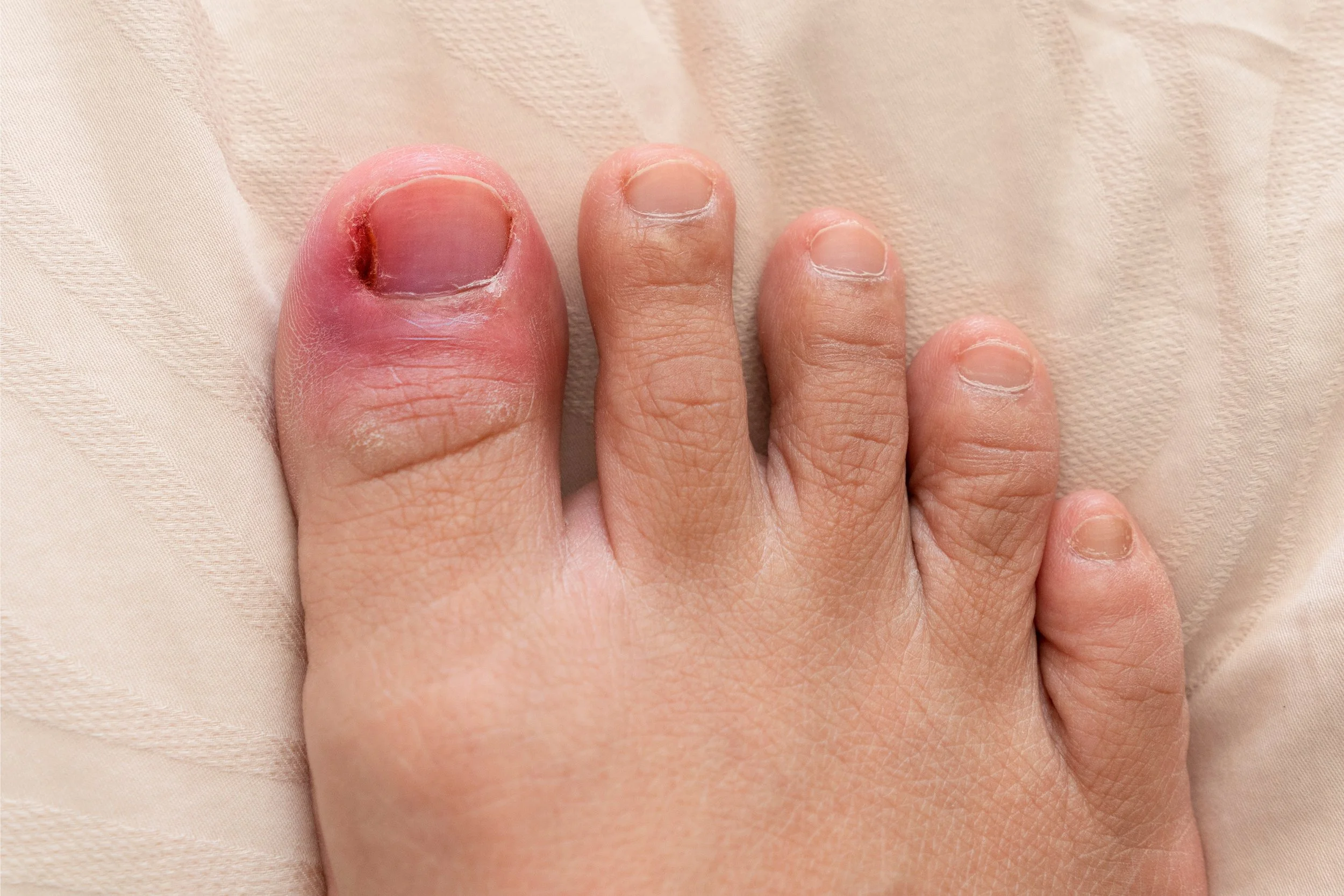
INGROWN TOENAIL
Ingrown toenails are one of the most common foot problems we treat. They can happen at any age but are especially common in teens and young adults. When left untreated, an ingrown nail can quickly lead to pain, swelling, or even infection.
At Solevanna Foot & Ankle in Washington, PA, Dr. Doan offers same-day urgent appointments for painful or infected ingrown toenails. Our goal is to relieve your pain quickly, stop the infection, and get you back on your feet without delay.
What Is an Ingrown Toenail?
An ingrown toenail develops when the edge of the toenail grows into the surrounding skin instead of over it. This causes pain, redness, and swelling. Sometimes, the skin may overgrow the nail edge or become warm, tender, and infected.
CAUSES OF INGROWN TOENAIL
Improper nail trimming (cutting too short or rounding edges)
Tight or narrow shoes
Toe injuries from sports or trauma
Genetic or hereditary factors
Don’t wait if you notice:
Increased redness or swelling
Pus, drainage, or foul odor
Severe pain or difficulty walking
Recurring ingrown toenails
Early treatment prevents infection, speeds healing, and reduces the risk of recurrence.
At Solevanna Foot & Ankle, we offers same-day urgent appointments for painful or infected ingrown toenails. Our goal is to relieve your pain quickly, stop the infection, and get you back on your feet without delay.
How Are Ingrown Toenails Treated?
Treatment depends on how severe your ingrown toenail is.
At Solevanna Foot & Ankle, we offer both conservative and advanced options to relieve pain and prevent recurrence
CONSERVATIVE CARE (MILD CASES)
Warm soaks with Epsom salt
Topical or oral antibiotics if infection is present
Guidance on proper nail trimming and footwear
NAIL BRACING SYSTEM (NON-SURGICAL)
Painless, gentle method to correct toenail growth
A thin, flexible strip is applied directly on the nail surface
Guides the nail to grow in a healthier, natural shape
No cutting, injections, or anesthesia required
Helps reduce pain and pressure from the ingrown edge
Lowers the risk of recurrence compared to traditional trimming
Supports long-term natural nail health
IN-OFFICE PROCEDURE (MODERATE TO SEVERE CASES)
Nail Edge Removal – carefully trimming the ingrown portion under local anesthesia to relieve pain and pressure.
Partial Nail Avulsion – removing part of the nail and, if needed, a small section of the nail root to reduce the chance of recurrence.
Matrixectomy – a minor procedure that permanently removes the problematic section of the nail root (matrix) to stop that edge from growing back and causing future ingrown toenails.
Post-Care – a sterile dressing and antibiotic ointment are applied afterward to protect the toe and promote healing.
Frequently Asked Questions About Ingrown Toenail
-
Ingrown toenails happen when the edge of your toenail grows into the surrounding skin. This can be due to improper trimming, tight shoes, trauma, or even hereditary nail shape.
-
Signs of infection include increased redness, swelling, warmth, pus drainage, and worsening pain. If you notice these, you should be seen promptly for treatment.
At Solevanna Foot & Ankle, we offer same day urgent appointment for infected or severely painful toenails
-
Most treatments are quick and performed under local anesthesia, so you’ll feel little to no pain during the procedure.
-
A matrixectomy is a minor, in-office procedure that permanently removes the root of the problematic nail edge so it cannot grow back. After numbing the toe, the ingrown portion of the nail is carefully removed, and a special chemical (such as phenol) is applied to the nail root to prevent regrowth. This procedure is especially effective for patients with recurrent or severe ingrown toenails. Studies show matrixectomy has a very low recurrence rate, only about 1.8% to 3% at 6 months, making it one of the most reliable long-term solutions for ingrown toenail.
-
Sometimes, especially if the nail edge isn’t permanently treated.
A matrixectomy offers the most effective long-term solution for recurrent ingrown toenails (1.87-3% recurrence)
-
Yes. Most patients can walk out of the office immediately after the procedure. We may recommend open-toed or roomy shoes for comfort while your toe heals.
-
Many insurance plans cover medically necessary ingrown toenail treatments, especially if there is infection, pain, or difficulty walking. Cosmetic treatments, however, may not be covered.
